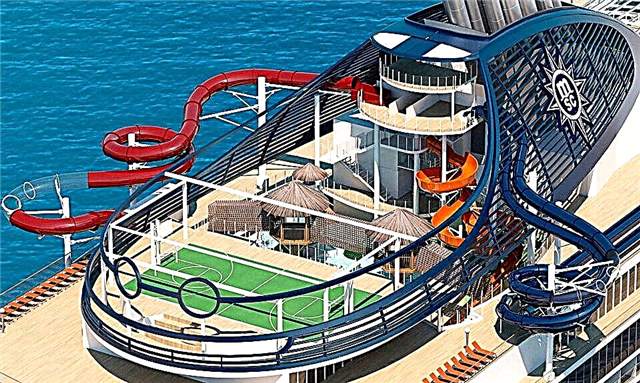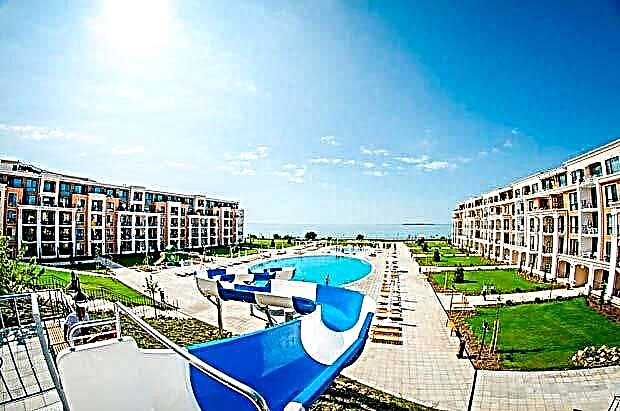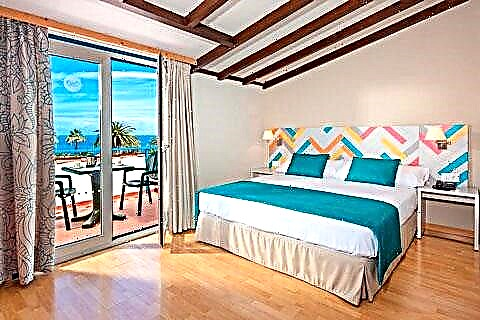One of the adornments of the Old Tatar settlement in Kazan is a snow-white Muslim temple. The first cathedral mosque in the city appeared after Empress Catherine II announced a tolerant attitude towards various religious denominations in Russia. Since the end of the 18th century, this temple has remained the center of the spiritual life of the Muslims of Tatarstan.
Catherine II in Kazan
The peoples of the Kazan Khanate have long professed Islam. After the capture of the capital by Russian troops, Orthodoxy began to spread in the conquered lands, but most of the local residents adhered to the old traditions.

General view of the al-Marjani mosque
Years passed, Christian churches were erected in Kazan, and a significant part of the townspeople continued to remain Muslims. In the first half of the 18th century, when the newly baptized order appeared, religious books began to be burned in the city and the remaining mosques were demolished. At the same time, Muslims were not allowed to build new temples. The persecution of Islam and the infringement of the rights of Muslims lasted for more than two centuries.
In 1767, the Russian Empress Catherine II wished to see the eastern regions of her country and learn more about the peoples living there. At her order, a whole flotilla was equipped, which went down the Volga. At the end of May, four imperial galleys approached Kazan and entered the mouth of the Kazanka through the high spring water.

View of the al-Marjani mosque from the Lower Kaban lake
Catherine II saw the picturesque Kazan Kremlin, attended a divine service in the Mother of God Monastery and met with wealthy citizens. She received a representative delegation of Tatar Muslims and allowed them to build stone mosques in the city.
The four-day visit of the Russian Empress to Kazan decided the fate of the believing Tatars. Catherine II stopped all persecution of Islam and thus earned great respect from the Tatar people. Until now, in Tatarstan, the Russian empress is called "ebi patsha", that is, "grandmother-queen".

View of the al-Marjani mosque from st. Kayuma Nasyri
The galley "Tver", on which the empress sailed along the Volga, was kept for a long time in the Admiralteyskaya Sloboda, but in the middle of the last century the wooden ship burned down during a fire. The exact miniature of the galley can be seen on Peterburgskaya Street in Kazan. The beautiful imperial carriage has survived. The original is exhibited at the National Museum of Tatarstan, and the bronze model is on Bauman Street.
History of the mosque
The al-Marjani Mosque became the first stone Muslim temple that appeared in the city since the time of John IV the Terrible. It was erected by the Kazan architect Vasily Ivanovich Kaftyrev at the expense of parishioners in 1770. 62 residents of Kazan became donors for the temple, who collected 5,000 rubles. The most money was given by the wealthy industrialist and homeowner Ibrai Yunusov.

The building turned out to be very large and beautiful. The Kazan mayor was dissatisfied. He sent a letter to Catherine II and complained that the minaret was too high. In response, the empress wrote that she gave the Muslims the right to build on earth, and they are free to ascend into the sky at their own discretion, since it is not part of the empress's possession.
At first, the new mosque was called the First Cathedral, and then - "Efendi" - the Lord's. Throughout history, the temple has been actively supported by the city's Muslim community. In 1861, with the money of the merchant I. G. Yunusov, a large extension with a staircase was made to the temple. From this, the building became one window axis longer along the facade.

Two years later, the mihrab was expanded at the expense of the same benefactor. According to the Yunusov merchant dynasty, who spent a lot on the maintenance of the temple, the mosque began to be called Yunusovskaya.
In the 1860s, a wealthy Kazan merchant, Zainulla Usmanov, donated a significant amount to rebuild the minaret. In the part that pointed to the holy for Muslims Mecca, a window was cut open, and inside it became much brighter. Wealthy merchants Miftahutdin Valishin and Valliula Gizetullin donated funds for an openwork metal fence. Year after year, the mosque became more and more beautiful.

Since 1850, for 39 years, imam-khatib Shigabutdin Mardjani served in the Muslim temple. The enlightened preacher, teacher and archaeographer was highly respected by the believers in Kazan. Marzhdani became famous as a historian, talented ethnographer and orientalist. From the end of the 19th century, the mosque began to bear his name. Today, a monument to the famous theologian adorns the embankment of Lake Kaban in Kazan.
Before the advent of Soviet power, the church held religious rituals, taught theology, geometry, astronomy and history. During the Soviet years, the al-Marjani mosque was not closed. It remained the only active Muslim temple in Kazan, where believers could come for spiritual support and perform namaz.

The religious building and the area around it have been repeatedly restored. A large amount of work was carried out in preparation for the celebration of the 1000th anniversary of the city, which was celebrated in August 2005.
Architectural features, interiors and shrines
The old mosque is considered one of the most beautiful monuments of Tatar religious architecture, and it rightfully ranks among the most outstanding sights of Kazan. The building was erected in the traditions of medieval Muslim architecture using elements of the provincial baroque. Thanks to the harmonious fusion of two different styles - European and Oriental, the iconic building has a graceful appearance and unique beauty.

The decoration is made in the motives of the "Petersburg" baroque and the centuries-old traditions of the decorative art of the Tatar people. The walls of the temple are painted white and the roofs are green. The tips and crescents on small architectural forms and the minaret are gilded and look very elegant.
The main building is two-storey with a T-shaped annex on the north side. A slender three-tiered minaret rises above it. The lower floor is used for service purposes, while the upper one contains two richly decorated prayer rooms with soft carpets on the floor.

The walls and vaults of the prayer rooms are decorated with gilded floral ornaments and multi-colored stucco moldings. In the wall that separates the halls, there is a spiral staircase leading to the minaret. She leads to a small circular balcony, from where the muezzin calls the faithful to prayer five times a day.
The main shrine has been kept in the mosque since the times of the Kazan kingdom. This is a stone from the grave of Muhammad-gali bey, which dates back to 1530.

Useful information for tourists
A Muslim temple has stood in Kazan for more than two and a half centuries and is open to believers and tourists every day. The entrance is free. Unlike a newly built mosque Kul Sharif, here you can feel the prayer and spirit of antiquity in everything.
The temple hosts meetings, lectures, presentations, meetings with famous people, religious holidays and book fairs. Muslims - nikahs marry in the mosque.

The male hall of the al-Marjani mosque
The architectural complex includes the Kazan Mukhtasibat, which is in charge of the leadership of Muslim communities throughout Tatarstan. There is an Islamic College across the street. Nearby there are cafes "Marjan", shops with halal products and clothing for Muslims, and a shop selling Muslim literature and symbols.
You can admire the al-Marjani mosque at any time of the day or night. The old building looks very beautiful in the rays of the sun and is effectively illuminated in the dark.

Minbar in the men's hall of the al-Marjani mosque
To get inside the mosque, tourists are asked to respect the feelings of believers and follow certain rules. Women should wear closed clothes, a long skirt, and a headscarf.In front of the temple, everyone takes off their shoes and leaves their shoes at the entrance to the mosque.
You cannot visit the mosque during prayer. If you have heard the muezzin's humorous call, the entrance to the temple is open only to believers. During the holidays, when there are a lot of people willing to pray, namaz is read in the courtyard.

Women's hall of the al-Marjani mosque
How to get there
The Muslim temple is located between the shores of Lake Nizhniy Kaban and Kayum Nasyri Street. From the metro station "Gabdulla Tukay Square" to the mosque can be reached in 20 minutes on foot. Tram number 2, buses and trolleybuses that go to the "River Station" stop nearby.
Attraction rating:











